Alright, let’s talk flower bulb planning, the kind that turns your spring into an explosion of color! Here’s the deal: fall is the time to roll up your sleeves and get those bulbs in the ground for a spring cutting garden. Getting bulbs into the ground now (in the autumn) before the ground freezes is like planting a little treasure chest of future bouquets. You want tulips that sway in the breeze, daffodils that shout, “Spring is here,” and maybe some fragrant hyacinths. Fast forward to spring, and you’ll have your own supply of fresh blooms for cutting and making those lovely flower arrangements. It’s like a subscription box from Mother Nature, but way better.
How I’m Planning Bulbs and Flowers for A Spring Cutting Garden
The floor of my office is a literal minefield.
One wrong step could mean death… to a future flower.
There are thousands of little color bombs stacked in piles everywhere—an arsenal waiting to be deployed.
If I don’t get digging soon, one of us (either the dog or I) will accidentally smoosh something, and the last thing I want to do is prematurely pre-empt this powder keg of potential.
Ok, I’ll stop with the munitions metaphors…
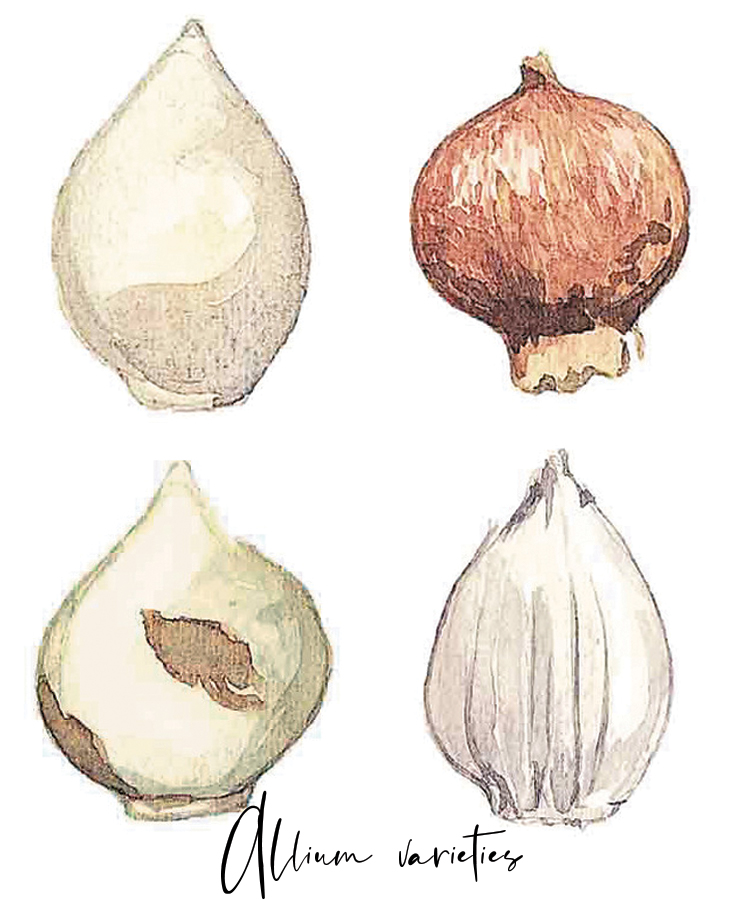
But seriously, the last time I planted this many bulbs was in my commercial property landscape management days. My building manager clients religiously requested precisely two installations of spring blooms to be installed in front of their fancy office buildings. The first is just in time for Easter, and the second is a follow-up exactly three weeks later.
And then they wanted them all gone – to make way for the pansies.
Bulbs don’t work how most property managers think they do. Making all those blooms ready just in time for ‘Spring Install #1’ and then again for ‘Spring Install #2’ requires some serious feats of horticulture.
The Problem with Forced Spring Bulbs
Those bulbs were all ‘forced’. (They were planted in pots with some dirt and chilled in large refrigerated warehouses so that their whole lifecycle could be precisely controlled for my precisely timed plantings). They go into the ground in pots and come out in those same pots; the hole is re-filled with another pot, and a few weeks later, those come out, too. And then pansies.
The whole process is super expensive and insane. It is insane because on the industrial levels we are doing it, it requires huge amounts of resources to maintain OCD levels of control over something that mother nature will do cheaper, faster, and better. No joke – working with Mother Nature will allow you to achieve that supposedly impossible trifecta – if you just make a plan to work with her rather than trying to supersede her.
So, how do you escape the insanity and get lots of flowers for floral designs that are cheaper, easier, and better?
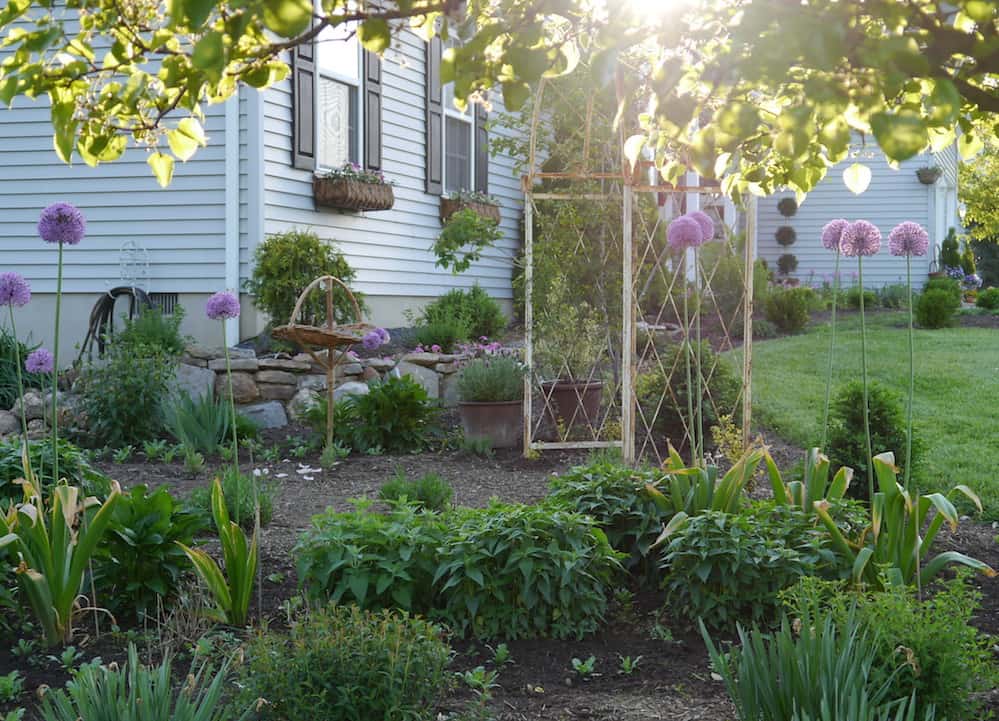
Why are forced spring flower bulbs so expensive?
First – realize this – forced bulbs that are in bloom in the spring come in about five flavors. Big yellow and little yellow daffodils, red and yellow tulips, and maybe a pink tulip (if you’re lucky).
They’re good in a pinch. If you need a last-minute gift or a quick hit of fresh flowers and holiday cheer, these are perfect options. But it isn’t the most exciting market, and it relies on you not thinking ahead and not realizing that you can do so much better for less if you start in the fall.
**Also – you should know – If you see potted bulbs in bloom in a store in the spring, they are forced and will cost you at least ten times more than you would pay in the fall.
The trade-off is this – last minute vs. think ahead, or DIY and a vast selection at a cheaper price vs. done for you, no selection and expensive. There is a place for both, but I know many of you who want your own cut flower garden will prefer the former to the latter.
Why are forced spring flower bulbs so expensive? Because you are paying for all sorts of crazy things – like fuel to put them into the cold cycle dormancy they require.
Then there is the people’s labor to move them in and out of freezers. Plastic pots and dirt, and the expense of assembling all that and moving it around just so you can buy it at a store. Madness!
None of that is a good idea – and there are definitely better ways to get beautiful flowers next spring.
Plant Bulbs in the Fall To Save $$$
I want to invite you to, instead, dip a toe into the vast world of fall-planted bulbs. (aka spring color bombs). When you arrive in this magical corner of horticulture land, you might feel a little like Charlie sliding into the Wonka Factory, and you will quickly find that there is much more to Candyland than just M&M’s.
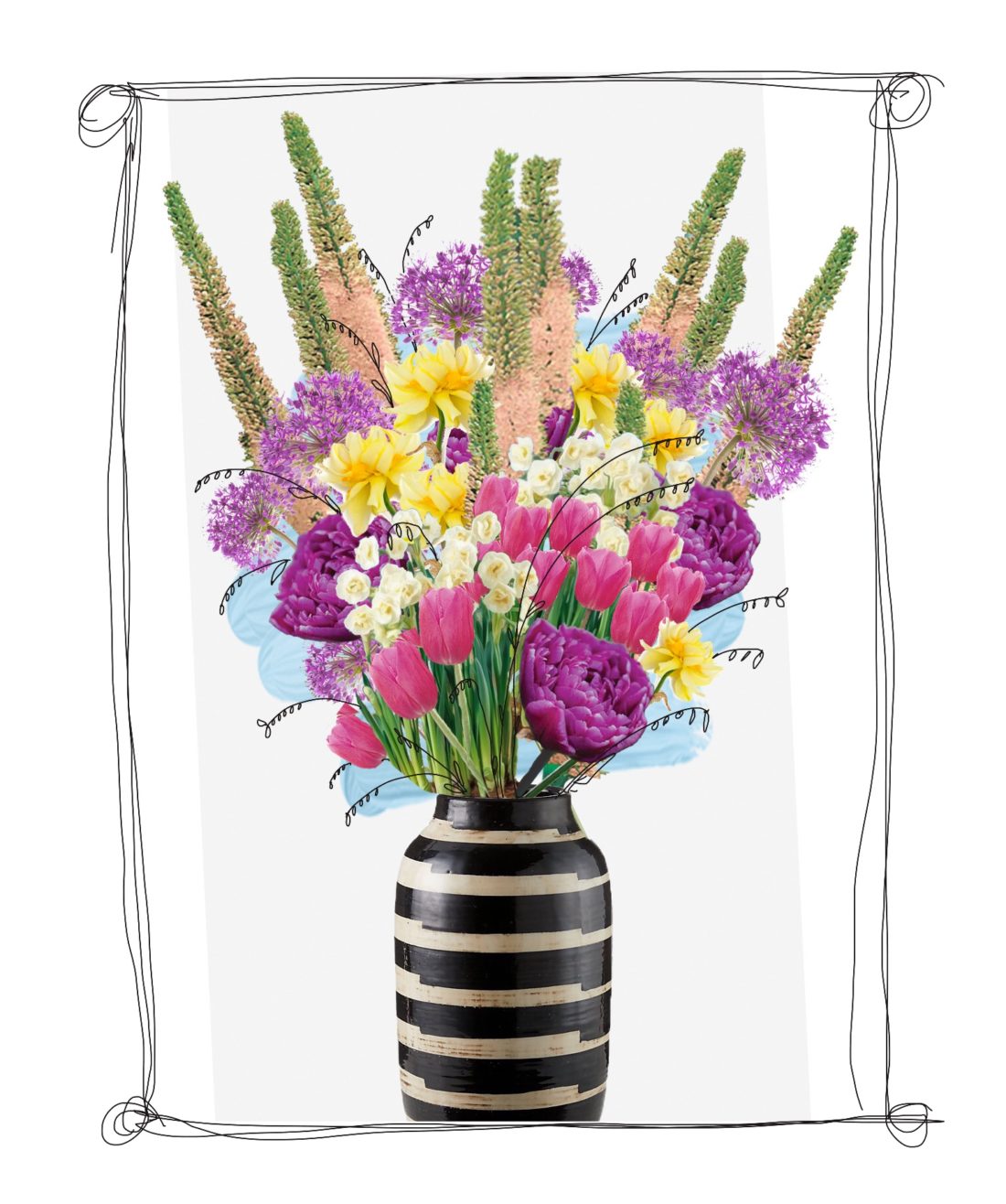
As a first-timer, you’ll likely get overwhelmed by the vast choice of blooms and bulbs in a bulb catalog. It can be overwhelming, and I find it hard to narrow down a selection that will create something unique.
So, as I am creating my spring-cutting garden this year, here are tips to help you choose your bulbs.
The goal is to help you grow the best materials to make beautiful spring floral arrangements for your home while also creating a pretty garden display. You will need a variety of showy flowers that will thrive in your hardiness zone and provide you with a succession of fresh-cut flowers from your own garden.
The bulbs have to be planted in the fall.
This is definitely a delayed reaction sort of thing. But good things come to those who wait, right? (actually, good things come to those who have a plan…)
Download my Spring Bulb Planting Design Chart
To keep organized and get the best results – I suggest a spreadsheet. You can use the one I’ve created for my own bulb cutting garden project – it is here – save it as a copy and then you can edit it to fill in your own choices.
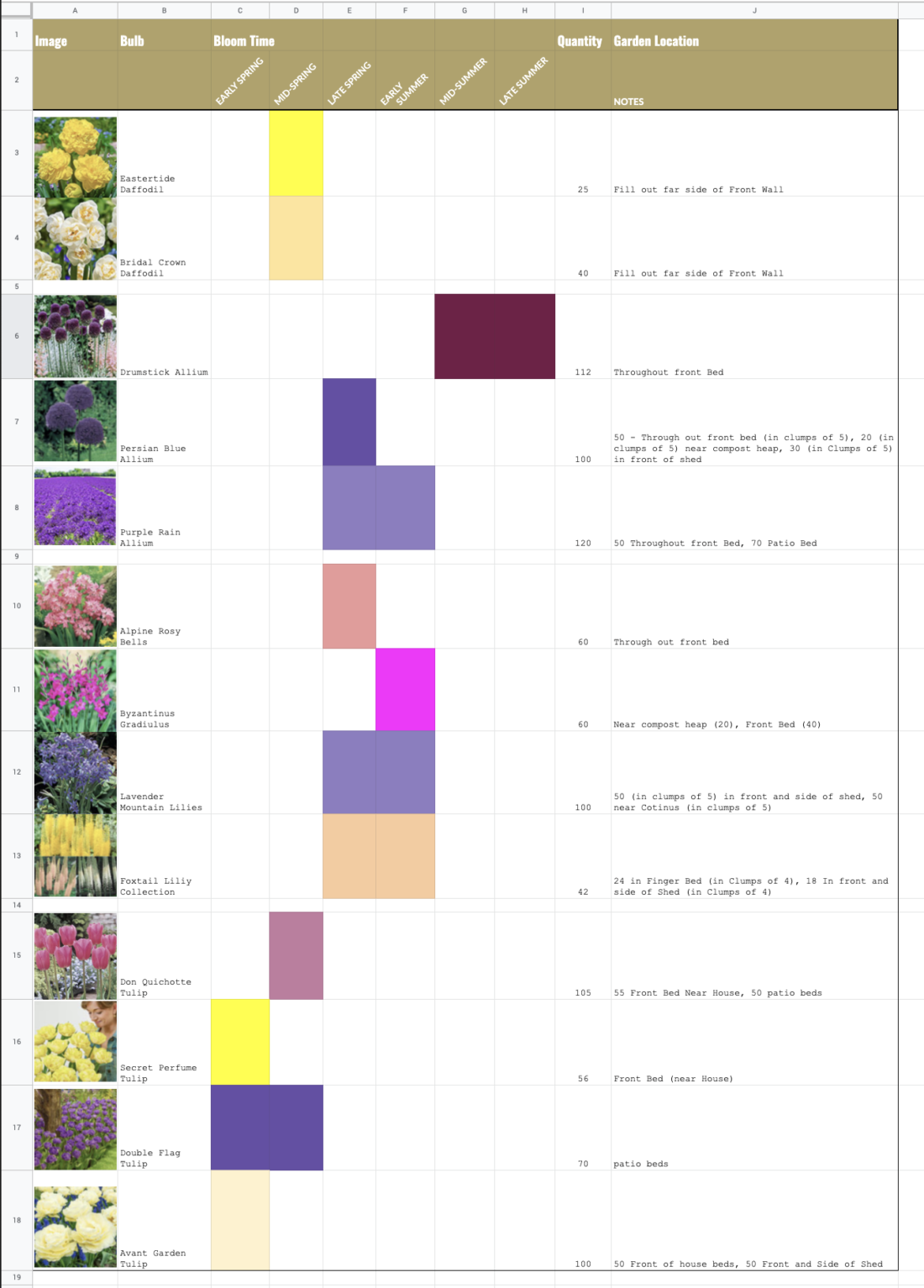
The bulbs need to get in the ground before they freeze where you live.
This is really a practical matter. It isn’t that you’ve missed out on anything if the first frost happens before you get them dug in – it is just that the ground can get a little hard if you wait too long. You can’t work with it if it is frozen.
The Bulbs need a cold cycle of at least 10-14 weeks to trigger them into a bloom cycle. So, if you don’t live where Mother Nature takes care of the refrigeration, you will have to take matters into your own hands.
(that’s right, pop ’em in the fridge right next to the OJ. Pull them out when you next clean out the veggie bin – then you should be good to go.
I should note – this isn’t the easy way. You will get much better results in your first year if you plant the bulbs in the ground now and wait until the following year for your homegrown flowers to emerge naturally.
(most bulbs require cold climates to cycle… If you live in Florida, well then, you’ll have to do it the hard way – or enjoy tropical flowers instead)
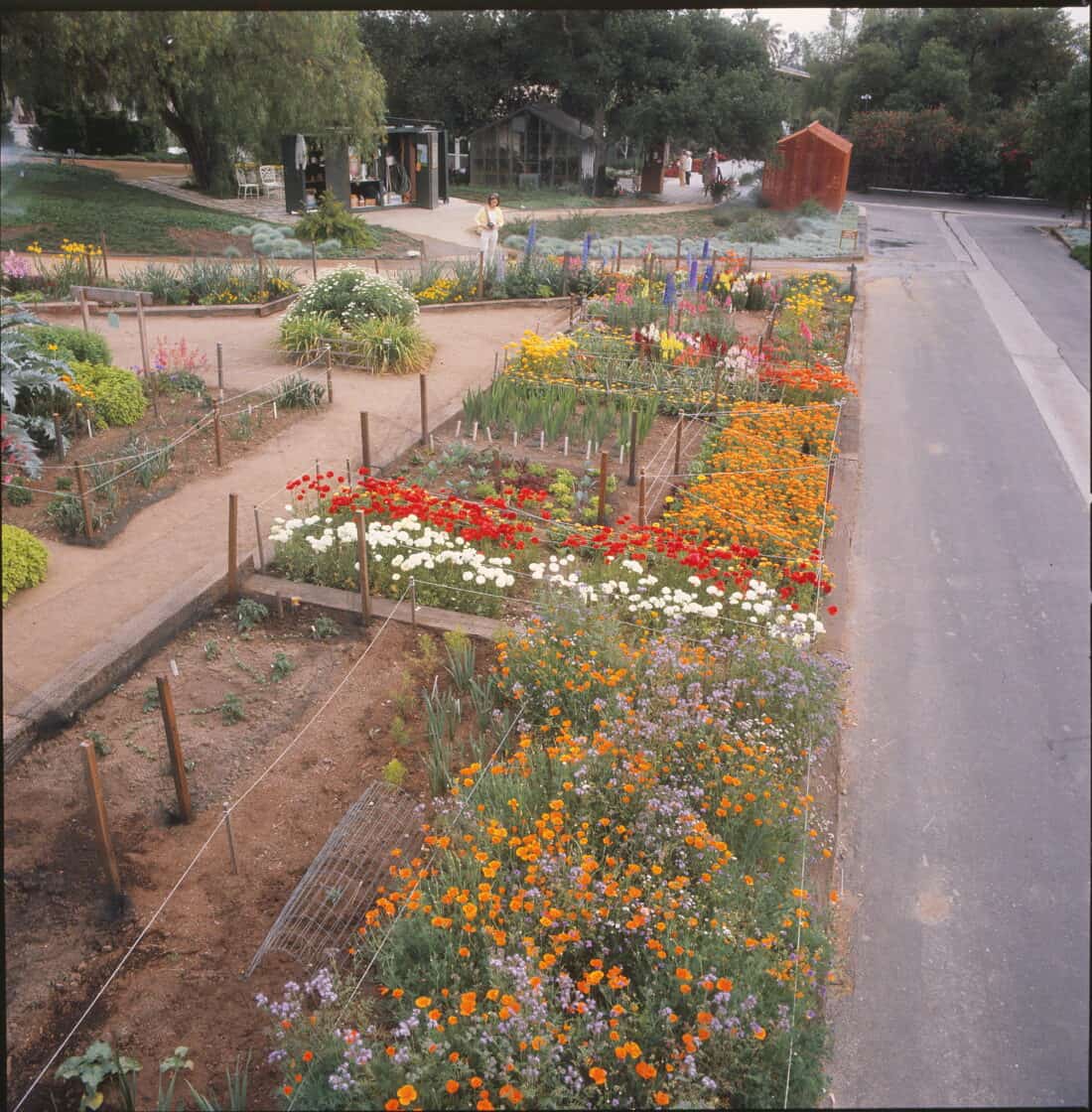
Special Bulb Considerations for Cut Flowers – The best bulbs for cut flowers
My goal as I started to plan my spring cutting garden was to choose bulbs that would be excellent cut flowers and give me a dreamy spring flurry of blooms to make the most fantastic flower arrangements as well as a garden full of flowers with all sorts of interest and nuanced details.
I consider four things most important when planning a bulb-focused cutting garden: Length (as in taller plants with strong stems), Longevity (long vase life), Color, and Culture.
(TBH – these four considerations are universal cutting garden considerations, not just for bulbs).
Bulb Stem Length
If you plan to cut the flowers from your garden to make fresh flower arrangements, you’ll want to know that they will grow with stems long enough to allow you to create beautiful bouquets.
While it is certainly possible to make short and tiny arrangements from bulbs with smaller flowers like grape hyacinths, crocus, chionodoxa, squill, or lily of the valley, these short-stemmed plants are going to be very limiting and harder to use.
For more floral-appropriate options, stick with varieties with stems at least 10 inches in length. You can always cut things down in size but you can’t make them longer.
Some good options for longer-stemmed and long-lasting cut flowers from bulbs are tulips, daffodils, allium, gladiolus, and a vast variety of lilies.
Longevity
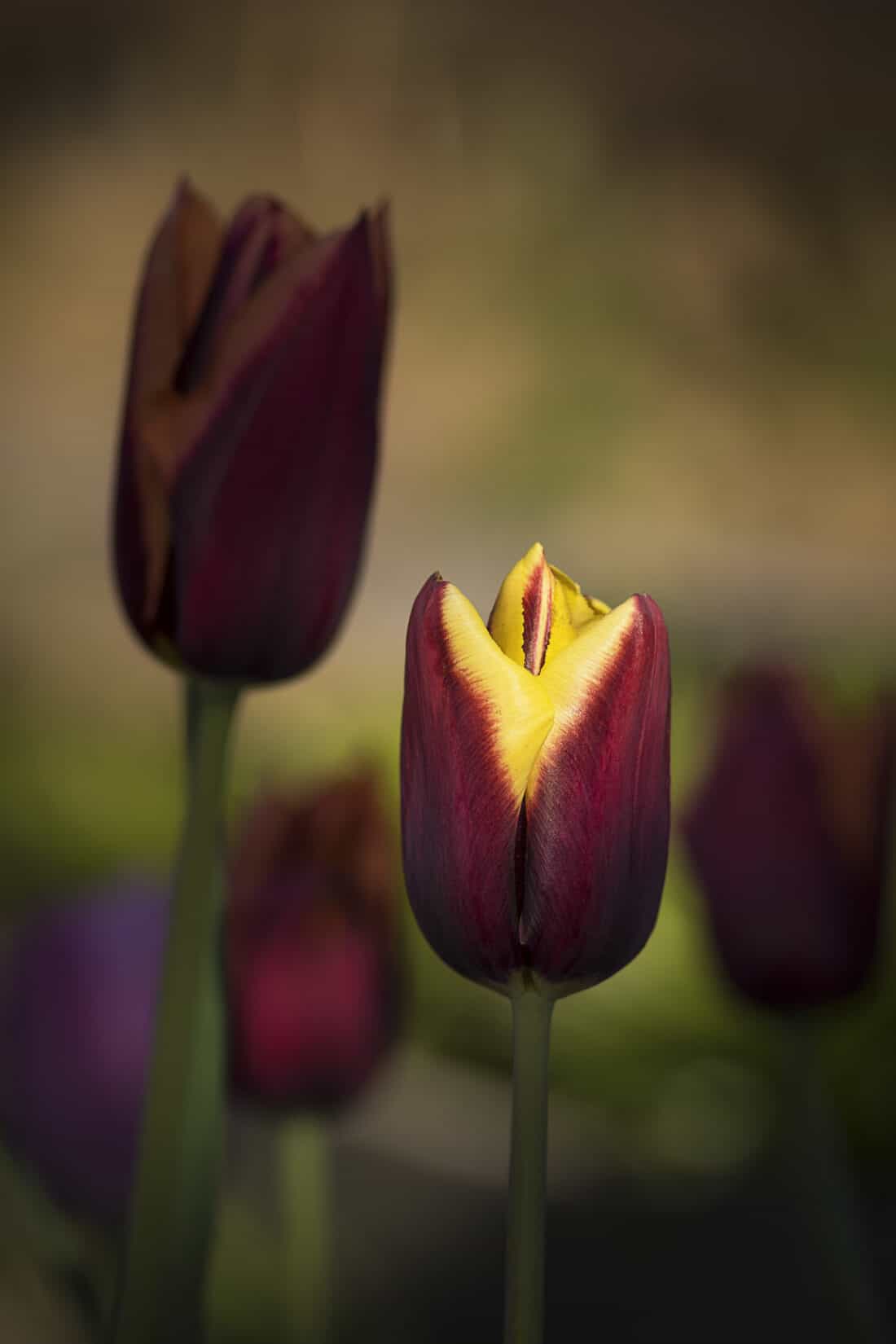
Not all bulbs bloom at the same time. And most bulbs have a short blooming window. You can expect up to 1-2 weeks of bloom time from a plant, and the best cut flowers will allow you to savor this bloom time in a vase.
Pay close attention to bloom times when shopping. Since most bulbs won’t last more than a couple weeks, you must be strategic about choosing bulbs for your cut-flower garden always to have something available for cutting.
If you look at my Bulb Cutting Garden Spread Sheet (above), I always have at least two colors and two types of flowers blooming at a time. I start with early spring and then move through mid-spring, late spring, early summer, mid-summer, and late summer.
(OK, okay – I don’t technically have two bulbs blooming in mid-late summer. But I will have lots of other non-bulb flowers (like foliage plants and other perennial flowers) in my garden that are blooming at that time.).
All bulb catalogs will tell you when a particular choice will bloom. Spring is broken down into three seasons, and so is summer (early, mid, and late for each). Make sure you have something blooming in all six mini-seasons.
If you have a small cut flower garden or little space, you can mix all these bulbs together and layer them into your planting area, cutting the recommended spacing in half or more. You won’t hurt the bulbs by doing this, and you’ll be much happier with the result of your cut flower bed.
Choosing Colors for Flower Bulb Arrangements
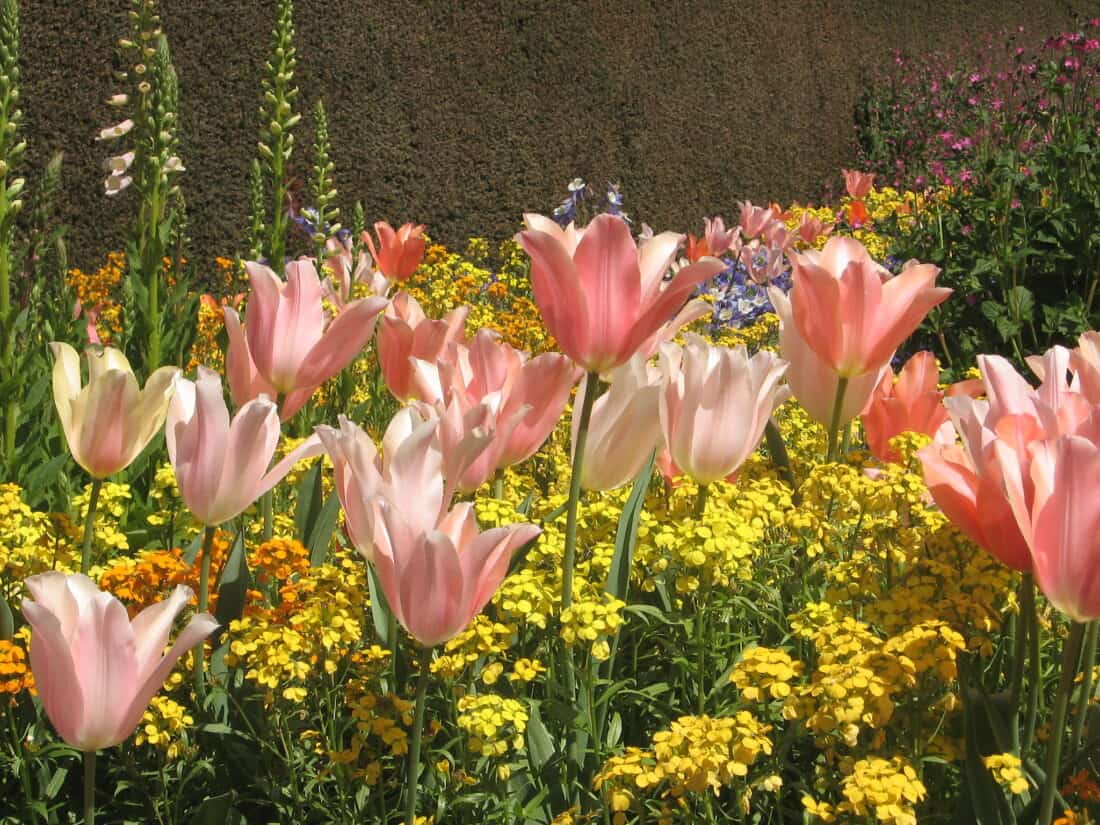
As a garden designer, I can promise you that the best garden planners always create some limitations of color in their designs. They don’t do the whole spectrum rainbow in one eyeshot. Too many things at once will always feel messy, disorganized, and chaotic. No one needs more chaos.
The easiest way to keep a garden looking like a chic, stylish person-created it is to limit your color palette.
Less is always more. You need to give yourself some crash barriers – try and keep the colors to 2 or 3 at a time. The floral arrangements you create from your garden will come together more easily than your planting plans.
And if you are super obsessed with all the colors – think about your view lines. Keep sets of colors together – so if you are in one area of your garden and can’t see another area – there may be an opportunity to play with a different mix of colors. Or, maybe you can use color to blend one area into the next. (for example, the front yard is yellow, purple, and pink, and then as you move around the house into the side yard, it morphs to yellow, orange, and red, where the yellow connects them visually).
What flowers for a cutting garden come in What colors?
Daffodils come in shades of white to yellow to orange and yellow to peach. Tulips come in every color of the rainbow. (Except blue – good blue flowers for cutting are nearly impossible to come by in the early spring). Allium is primarily purple, blue-ish, pink, and white. Lilies and gladiolas can be as wide-ranging as the tulips.
For my plan, I am sticking with yellows that fade into the soft shades of cream and missing them with purples. But I’m letting shades of pink weave their way in and out of my scheme, too.
Always add White!

Also – White goes with everything and makes it better. Ensure you always have some white flowers in bloom somewhere throughout the growing season.
The only time that color considerations aren’t as important is if you are dedicating a utility area of your garden to cut flowers. Then, you can do rows and rows of things you want to use in your floral designs. But I think this isn’t typically how most people do it. (Unless you are endeavoring to become a more serious flower farmer – and even then, your future line of flower products needs to be in colors that work together)
My cutting garden is also just my garden – like an overlay on the existing design. I suspect yours will be the same, so you need to think about how to intersperse the bulbs with all the other plants you are growing (I’ll talk more about how to do this in an upcoming post).
Here is my bottom line: if I am growing for myself, I want to get the most out of my efforts and tickle two feet with one feather. My cutting garden is embedded in the rest of my garden – giving me the best of both worlds – utility and elevating everything I already have.
Which brings me to my last consideration…
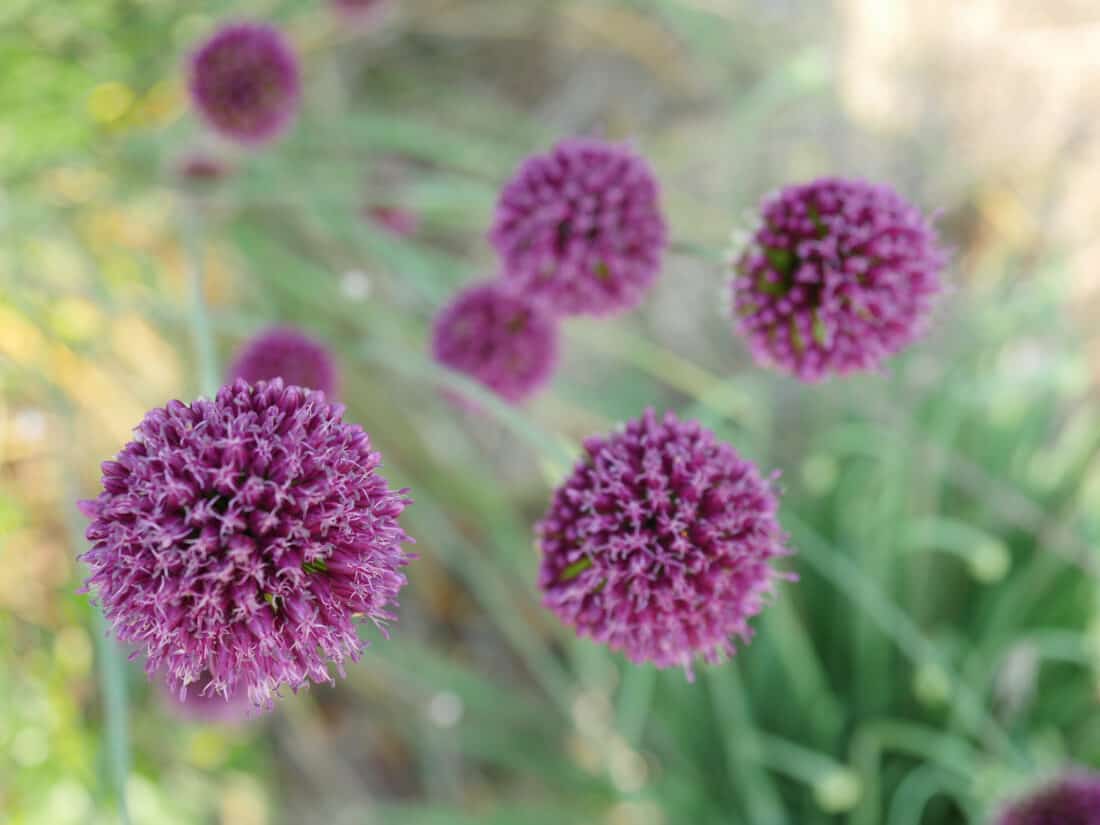
Flower Bulb Culture
As with all plants, you must plant things that suit your site and their surroundings. That means choosing bulbs that are hardy in your growing zone, and it also means that you give them proper growing conditions.
Most bulbs perform best when planted in a sunny spot with well-drained soil. (Remember, in the early spring, some areas are full sun that are’t sunny after the rest of the plants and trees leave.)
The other consideration to pay attention to is what will come in later – after the bulb is done blooming. Yes, we all like to try and achieve ‘succession’ planting (that perfect fade from one set of seasonal blooms to another is the gardener’s holy grail). Still, it is also worth considering that many bulbs don’t look great once the flowers are gone, and the foliage starts to die back.
And you must let them die back wholly! (Because obsessively cutting prematurely will steal their ability to gather vigor back into the bulb to support future blooms).
The best you can do is know that many bulbs kinda tend to die ugly. Surround them with other annual flowers or something that will be growing pretty to hide them as they go down.
Putting Plants together – bulb garden design
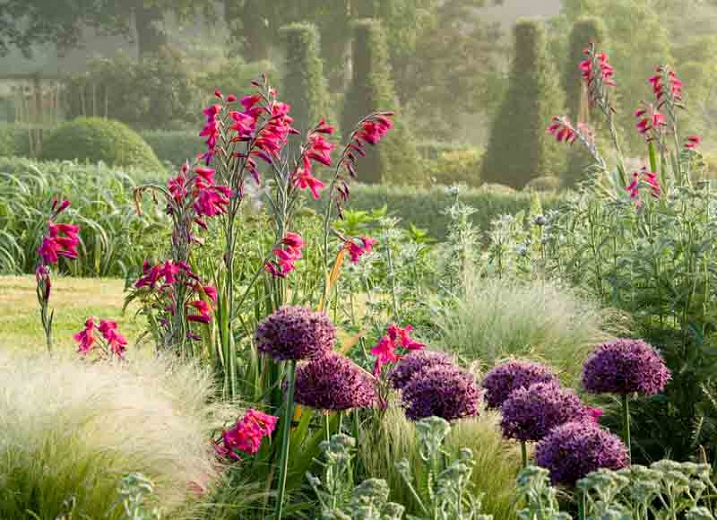
I ADORE this garden shot – (and I am planting something similar). Grasses, daylilies, and masses of other perennials are your best option to plant alongside spring and early to mid-summer bulbs. This way, you get the bulb blooms but overlook the after-bloom dregs hiding in all the other plants.
Have questions about designing a bulb-cutting garden? Ask in the comments; I’ll be happy to help.
xo
-Rochelle
p.s. Here is one really good reason to buy forced spring bulbs – and that is when you are in a panic. Like when you need something nice to distract from something less pleasant. Maybe pick up a pot while purchasing lettuce for that lame salad you were assigned by your MIL for easter dinner (and you know it will not live up). Cheery forced daffodils are perfect for emergency skid greasing.
p.p.s If you are wondering what happened to all those truckloads of forced bulbs i used to plant commercially?
Lesser (or, perhaps, more sane) landscapers might have just dumped all of it. (This is common), But I always found forever homes for all those bulbs. (I donated some, and many are planted in my and friends’ gardens). (If you‘re patient and wait a couple of growing cycles/ years, forced bulbs recover and bloom as usual. You need to plant them in a typical garden. Let them rest and re-sync to return to their regular seasonal selves).
More Bulb and Cutting Garden Posts For You:
Share this post:
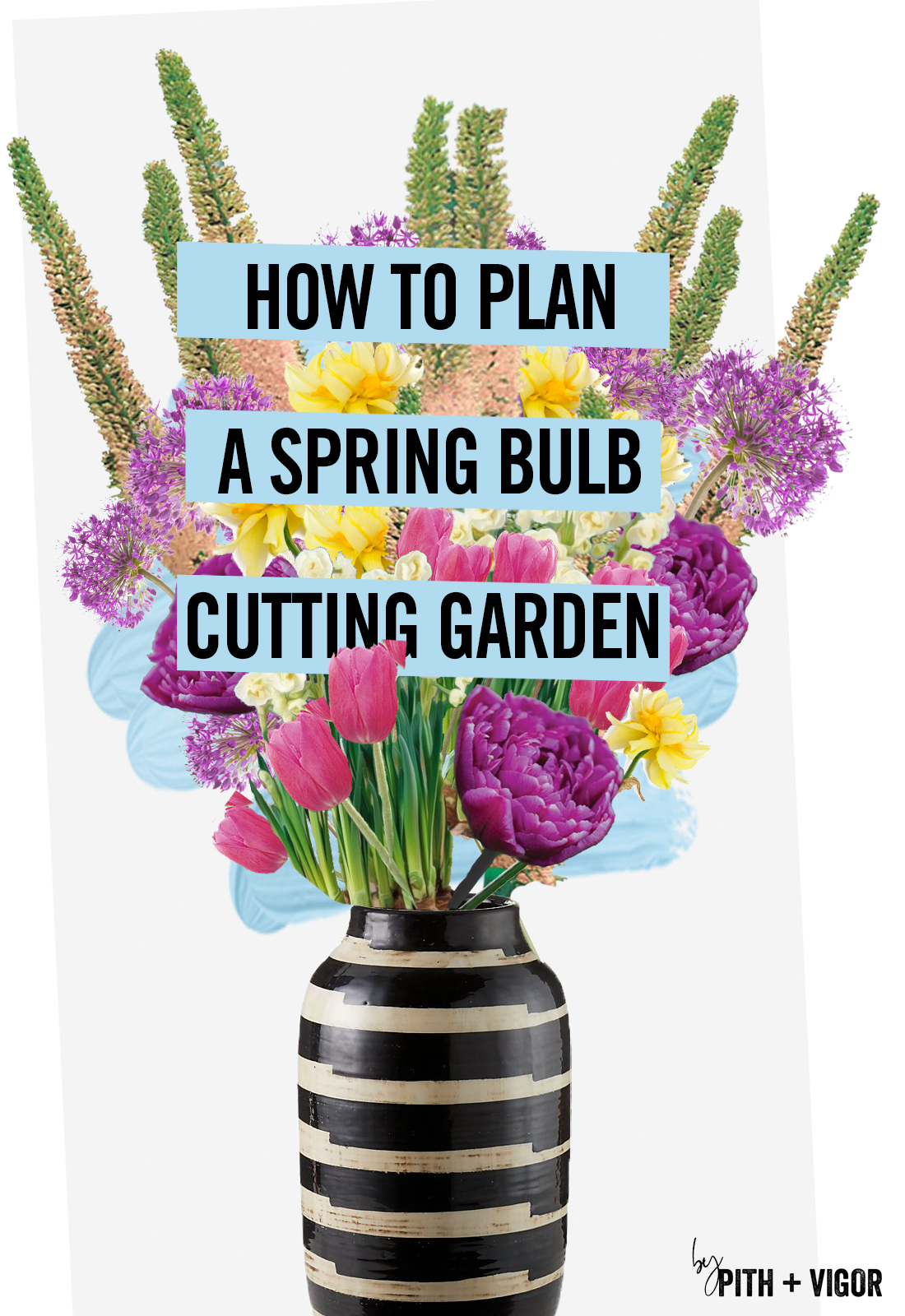
This post is sponsored by flowerbulbs.com.
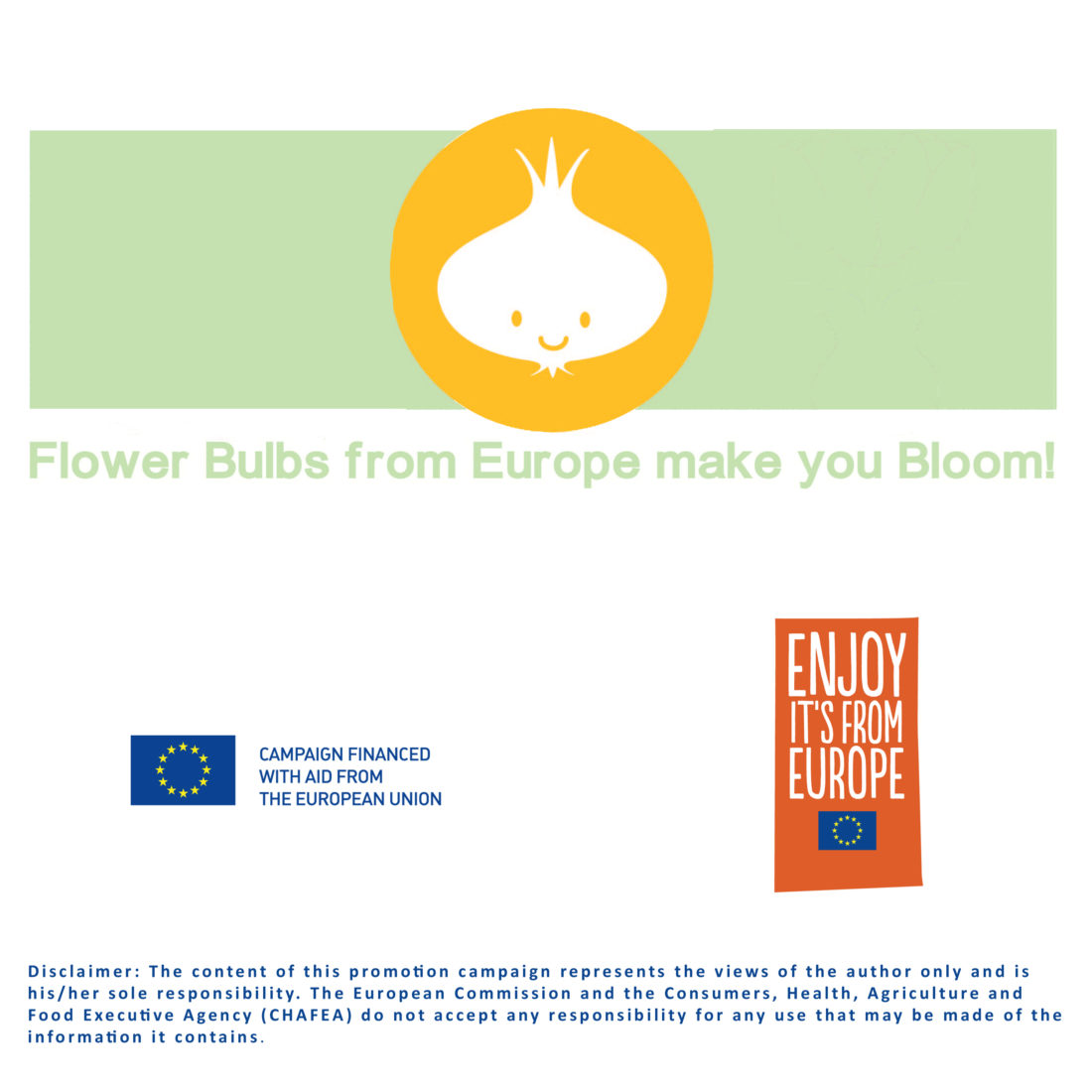
Related Posts:
comments +